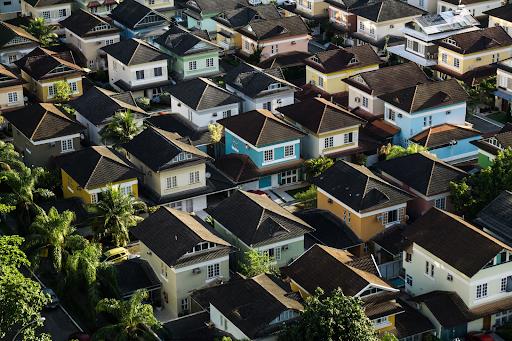When discussing the current state of housing trends, it’s evident that they are shaped by a combination of societal shifts, technological advancements, and economic factors. This is particularly important for people involved in the housing market, including homeowners, builders, and real estate professionals, who need to stay informed about these trends.
A major issue in today’s housing landscape is affordability. Consider the findings of a 2023 Redfin report: only 16% of homes on the market were deemed affordable. This assessment was based on whether a monthly mortgage payment would not exceed 30% of the median income in a given area. This marks the lowest level of affordability ever recorded, underlining a significant challenge in the housing market.
This affordability crisis significantly influences our perception and interaction with living spaces. For a growing number of people, purchasing a home is increasingly out of reach as housing prices rise faster than their incomes. Nonetheless, the housing sector is always evolving, which in turn reshapes how we view and engage with our living environments.
In this blog post, we’ll explore the key trends that are set to define the future of housing.

Reverse Mortgages: A Financial Trend in the Housing Market
A key trend in the housing market is the increasing interest in reverse mortgage loans among homeowners aged 62 and above. Obtaining a reverse mortgage loan is particularly appealing for seniors aiming to supplement retirement income, manage debts, or fund home improvements without selling their home. This growing trend has implications for the housing market, as it illustrates a shift in how seniors are leveraging their property’s equity.
Such financial tools are reshaping the landscape of real estate, particularly with options like HECM for Purchase, which allows seniors to buy a new property. Notably, this reverse mortgage type signifies a shift in how seniors use real estate assets for retirement planning, influencing their long-term financial decisions and interactions with property equity. Understanding this trend is crucial in predicting the future dynamics of the housing and real estate markets.
Sustainable and Eco-Friendly Living
Modern housing is strongly focusing on sustainable and eco-friendly living. This movement is not just about reducing environmental impacts; it aims to create healthier and more efficient living spaces. These initiatives also provide community education on sustainable practices. However, the widespread adoption of sustainable housing faces notable challenges.
Zoning regulations and building codes often do not accommodate innovative, sustainable designs. Additionally, the housing market has been slow to embrace sustainability, partially due to misconceptions about higher costs. But with sustainable materials becoming more affordable and their long-term economic advantages becoming apparent, these views are gradually changing.
Smart Home Technology Integration
The housing industry is experiencing a significant transformation with the integration of smart home technology trends. Automated systems for lighting, heating, and security are not just convenient; they change how we interact with our homes by making them more efficient. These technologies are instrumental in managing energy use, leading to cost savings and reduced environmental footprints.
Home automation is expanding into areas like health monitoring and elder care, offering new possibilities for assisted living. As these technologies continue to advance, they are likely to become a standard feature in modern homes, evolving with our changing lifestyle needs.
Minimalist and Multi-Functional Spaces
The rise of minimalism in home design reflects a response to the complexities of modern life. Minimalist homes emphasize simplicity, open spaces, and a reduction in non-essential items. They focus on multi-functionality, where rooms can serve multiple purposes, such as a living room that doubles as a home office.
This approach is particularly attractive in urban areas where space is limited. It represents a cultural shift towards valuing experiences and functionality over possessions, resulting in homes that are both aesthetically pleasing and practical.
Community-Centric Developments
Community-centric developments are redefining residential design by emphasizing shared spaces and amenities that foster community connections. These developments often include communal gardens, playgrounds, and social spaces to encourage interaction and create a sense of belonging. By focusing on shared resources and communal living, these developments not only support sustainability but also strengthen social ties in neighborhoods. This approach is invaluable in urban areas, where it helps combat isolation and fosters more interconnected living environments.
Adaptive and Resilient Designs
In response to the growing impact of climate change, there is a need for housing designs that are adaptive and resilient. Such homes are constructed to withstand various environmental challenges, such as extreme weather and rising sea levels. They incorporate flexible design elements like modular components or adaptable energy systems and utilize sustainable materials and construction methods. This trend underscores the growing recognition of the necessity for homes that are environmentally sustainable and capable of adjusting to future challenges.

Conclusion
As we delve into these housing trends, it’s evident that the future of housing is influenced by a mix of factors: sustainability, technological integration, evolving work patterns, community dynamics, and the necessity for adaptive and resilient design. These trends mirror our changing societal requirements and environmental concerns, hinting at a future where homes are more than just living spaces; they are dynamic environments that adapt to our lifestyles, work habits, and the evolving climate of our planet.
Understanding these trends is essential, not just for professionals in the housing market, but also for individuals planning their future living spaces. By staying informed and adaptable, we can contribute to and benefit from the progressive evolution of our living environments.
|<iframe style="width:120px;height:240px;" marginwidth="0" marginheight="0" scrolling="no" frameborder="0" src="//ws-na.amazon-adsystem.com/widgets/q?ServiceVersion=20070822&OneJS=1&Operation=GetAdHtml&MarketPlace=US&source=ss&ref=as_ss_li_til&ad_type=product_link&tracking_id=coaching054-20&language=en_US&marketplace=amazon®ion=US&placement=B085GM5WMG&asins=B085GM5WMG&linkId=6843153c05bd8c1994d613db6ccb3cca&show_border=true&link_opens_in_new_window=true"></iframe>|_____________________
By: Rylie Holt
Title: Home Improvement Trends: Forecasting the Evolution of Housing
Sourced From: www.blogtrepreneur.com/home-improvement-trends-forecasting-the-evolution-of-housing/
Published Date: Sat, 13 Jan 2024 21:33:14 +0000
Did you miss our previous article...
https://coachingbusinessowners.com/ribbon-cutting/ecommerce-funding-business-financing-for-online-sellers






